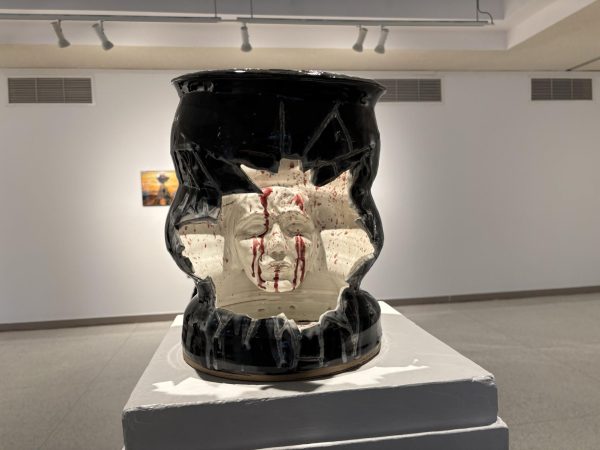Satirical ‘Girls’ flaunts flaws and creativity in final season
“Girls,” which is four episodes into its sixth and final season, is still vulnerable to a lot of the same criticism it received from the beginning. It remains a show about four privileged white girls with a tricky tonal balancing act that allows the show to be satirical and empathetic. As always, that balancing allows for the show’s best aspect — its unique voice — and its worst — its inconsistency.
Perhaps the biggest question surrounding “Girls” this season is what ties the cast of characters together now that they are growing up and growing apart. Right now it feels too early to answer that question, partially because the first three episodes of season six have been bottle episodes; rather than starting with the overall arc of the season, the show chose to tell three very specific stories first.
That choice led to three great episodes that all touched on fundamental themes in the show. Despite not following all the characters, they still feel like essential episodes of “Girls.” In the opening episode, creator Lena Dunham’s character Hannah visits the Hamptons for a writing assignment and ends up having a fling with a surfing instructor played by Riz Ahmed. It explores the idea of Hannah being content with a less glamorous, non-New York City based lifestyle. That might not be unique territory for the show, but there’s something genuinely touching about where this episode ends. Hannah grows closer to being a more likable person, something she and audiences have struggled with.
The second episode touches on the tenuousness of Hannah and Marnie’s connection by again leaving New York City. They might not seem like compatible best friends, but the show is able to communicate something real about that kind of friendship — sometimes we stay friends with people because of what we have shared with them rather than what we do at a given moment. We are invested and that is what matters.
It might be telling that the show had to leave its usual structure to make this happen, but that does not make the episode less effective. “Girls” plays to its strengths in its first three episodes, ignoring something that was sometimes a weakness — an overarching sense of a plot.
The third episode is worthy of its own article, and again could not exist within the structure of a typical television season. Hannah goes to see a famous white male author who asked to see her after she portrayed him as a sexual predator in an article she wrote. The situation is delicate and awkward and handled perfectly, revealing all of the sides of a complicated situation without letting anyone off the hook. It is about what happens when someone uses their charisma, power and even empathy for sexual benefit. The episode, in taking on a significant social issue while retaining the show’s voice, feels like evidence that “Girls” has grown up. The show feels like the perfect venue for the issue but is squirm-inducing regardless.
Something these three episodes have in common is that they center on Hannah, and show evidence of her growth as a person. During the fourth episode, which begins the season’s more traditional arc, I began wondering if the show would be as generous to the other characters as it had been to Hannah by showing them having interesting conflicts and dealing with them in productive ways. Sometimes “Girls” has been too focused on Hannah, which can make the accusations of millennial narcissism leveled at Lena Dunham feel valid.
So far, the show still has trouble nailing the balance of comedy and drama with all of its characters. It is consistently hilarious, but not consistently meaningful. Some characters feel like they are getting a fair portrayal, others do not. Adam and Jessa, in particular, start off the season on an absurd note. They introduce what seems like a key plot device to keep everyone together — an autobiographical movie about the love triangle between Adam, Jessa and Hannah — but in doing so test the believability of their characters.
It is a typical “Girls” complaint, encapsulating a lot of what makes the show flawed. Still, it is far from show-ruining, and part of the charm of the show has been how boldly it wears its flaws, and how the flaws double as advantages. I imagine the payoff of the movie scenario will be better than its beginning.
Because elsewhere in the fourth episode, “Girls” flaunts the creative flourishes a show in its final season should — a forgotten character makes a return, a secondary character dies and something major and terrifying happens to Hannah. For the most part, season six of “Girls” does not just have something to say —it has important situations to show. And that is more than enough to make up for some character inconsistencies.







